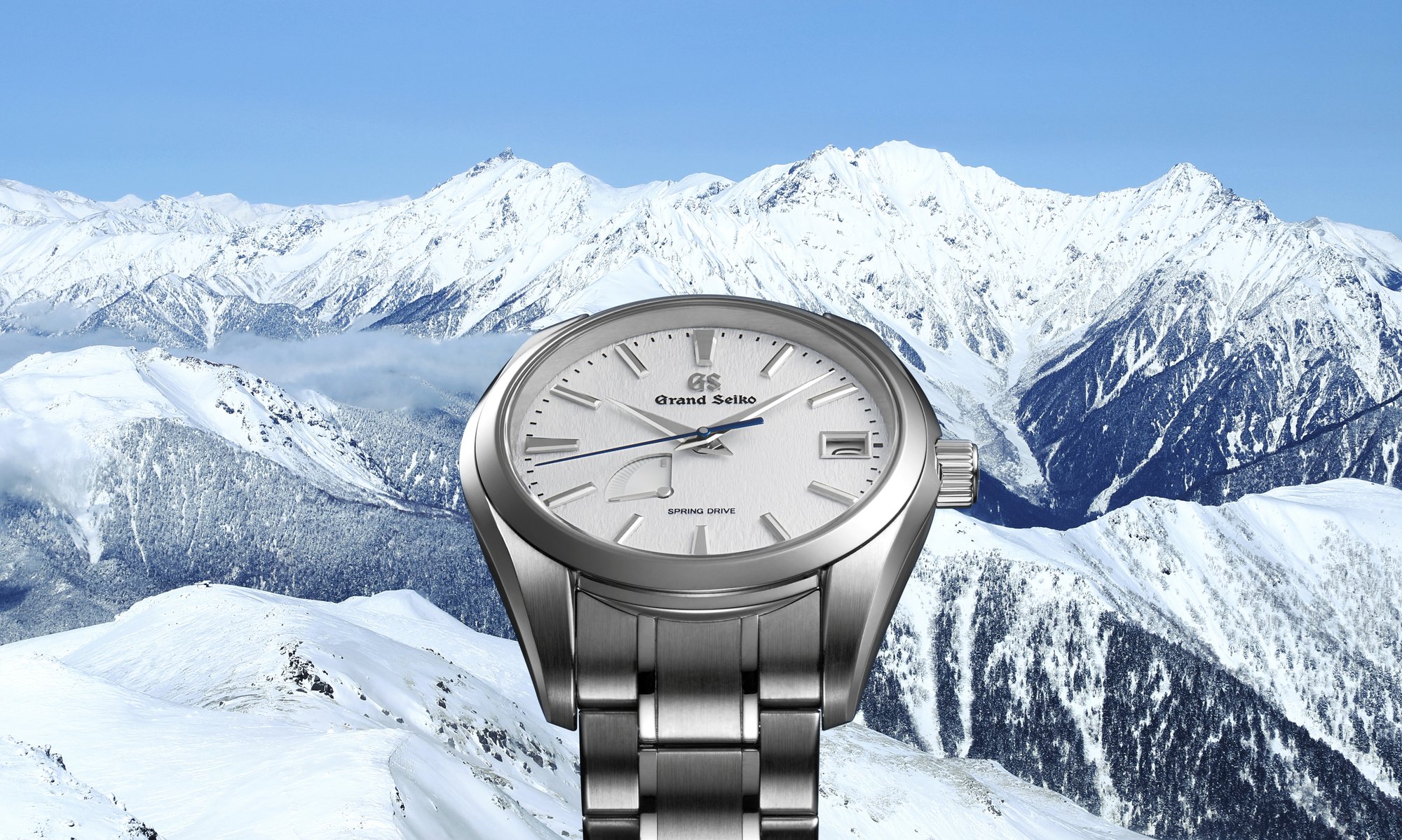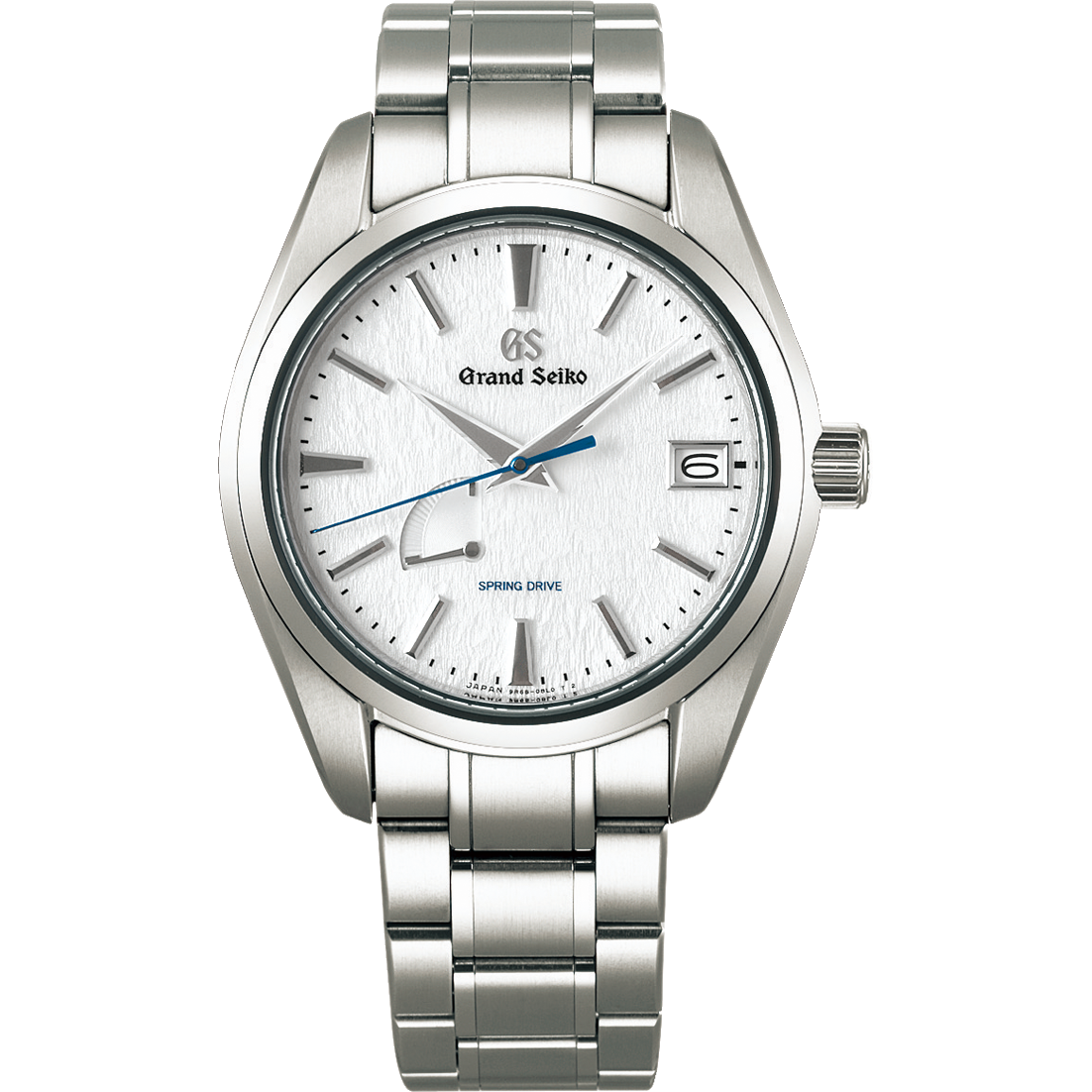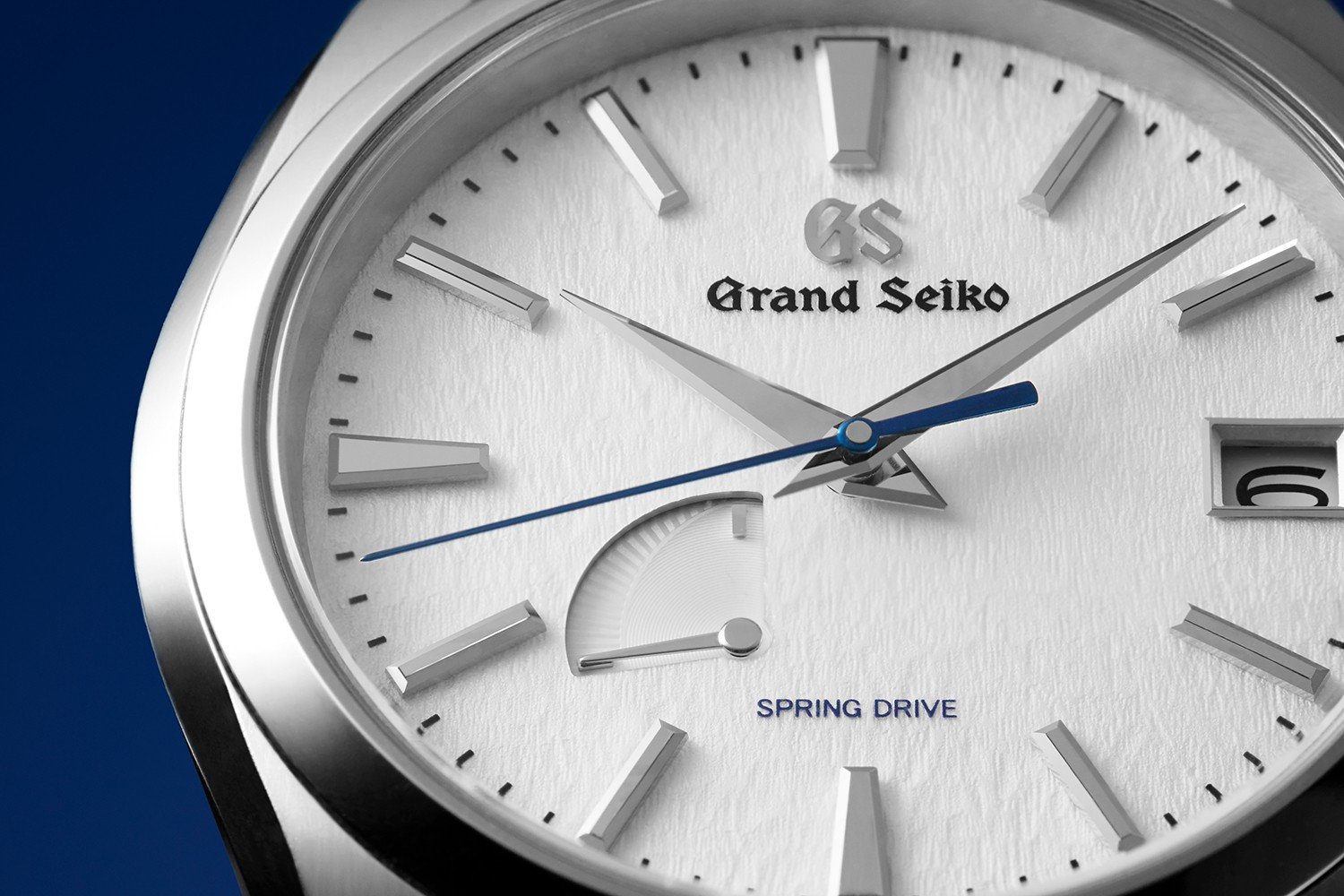The Grand Seiko Spring Drive Snowflake

Published: Jul 15, 2021
The Grand Seiko Spring Drive Snowflake SBGA211 is a profoundly interesting watch and an investment-worthy proposition for anyone with a love for all things Seiko or indeed, the Japanese brand’s ground-breaking Spring Drive technology. Apart from its beautifully shaped hands and simplified dial layout, surrounded by a distinct titanium case – you may wonder what is so important about the Seiko Spring Drive Snowflake watch.
Yet, a few moments in its presence and the depth of its complexity can be fully appreciated. The Spring Drive Snowflake ref: SBGA211 belongs to Grand Seiko’s Heritage collection. Three-handed versions of the Spring Drive comprise around 200 components each and surpass expectations in accuracy, superseding the standards outlined by Contrôle Officiel Suisse des Chronomètres (COSC).
Better known as the “Snowflake” to its fans, the Grand Seiko watch has two parts to its story. One is the development of its unique dial, which had never been offered in anything other than a Spring Drive-powered watch before. The second part of its story surrounds the development of its Spring Drive movement. If you weren’t already aware, the Spring Drive gives a feeling of time passing fluidly and uninterruptedly across the dial. Coupled with its calm-inducing dial, the Grand Seiko Spring Drive Snowflake watch delivers the full package; accuracy, clarity and beauty, all rolled into one.
Understanding the Spring Drive movement
To be able to fully appreciate the beauty and horological expertise behind the design of Seiko’s Spring Drive movement, it is first good practice to take a look at its differences compared to a mechanical or quartz-powered movement. To start with, a mechanical movement will present time as a series of oscillations. The stuttering motion of the seconds hand, which jumps forward once per swing of the balance (as the escape wheel unlocks itself), can be observed on the dial as the watch keeps track of time. In contrast, a quartz movement works much different to that of a mechanical movement. It vibrates over 30,000 times per second thanks to its piezoelectric structure. The battery sends electricity to the quartz crystal through an electronic circuit causing its oscillator to vibrate quickly and with a precise frequency. High-frequency quartz movements can create the illusion of a smooth and continuous movement, similar to that of a high-beat mechanical watch. The Spring Drive movement, however, is the only technology with a true continuous forward motion.
How did the concept of the Spring Drive come to be?
An engineer for Seiko Epson in Shiojiri originally birthed the concept of the Spring Drive movement. Yoshikazu Akahane began experimenting in the 1970s with the idea but it was not until 1982 that the first patent was filed. Twenty years would then pass before Seiko presented the movement publicly at Basel, Switzerland in 1997. The first commercially available watches from the Spring Drive family were released a year later.
A quartz oscillator is where the similarities between a Spring Drive movement and a quartz movement begin and end. Whilst a quartz movement features a battery, a Spring Drive engine does not. A spring Drive must also feature hands and is powered by mainsprings. Technically indistinguishable from any other mechanical watch, the Spring Drive watch by Grand Seiko certainly sits in a unique sector of the industry. One reason why the Spring Drive took so long to develop was down to the fact that the energy released by the movement is so tiny, so some form of a low-energy-consumption integrated circuit was necessary before it could power a commercial watch.

How the Spring Drive works
Seiko’s Spring Drive movement operates from three types of energy; mechanical from the mainspring, magnetic from the glide wheel and electrical from the quartz crystal. This is often referred to as the Tri-synchro Regulator. The glide wheel with a permanent magnet is turned by the last gear of the going train. This magnet turns between two electromagnets, functioning as an electrical generator. The current generated from this then travels to an integrated circuit and the quartz crystal. As current passes through the crystal it vibrates, creating oscillations that are counted by an IC. The IC then passes the energy back to the electromagnets that surround the glide wheel and the energy becomes a magnetic force. The energy applied to the glide wheel, causes it to turn 8 times a second precisely. The glide wheel controls the unwinding of the mainspring in the same way that a lever, balance and escape wheel control the mainspring in a mechanical watch. What makes the Grand Seiko Spring Drive watch so unique is the fact that it is neither powered by a mechanical or quartz movement, but a mechanism that combines the two.
The Grand Seiko Spring Drive Snowflake dial
Now that we understand how the Spring Drive Snowflake works, we can appreciate the aesthetic built around it. The Snowflake dial is the most defining feature of this Grand Seiko watch. Echoing the appearance of freshly fallen snow and inspired by the snowy peaks of which form the backdrop to the brand’s Japan-based studio - its rice paper-like surface shimmers beautifully under the light. Breaking up the surface texture of the dial is the power reserve indicator that sits in between the 7 and 8 o’clock locations. This feature marries nicely with the diamond-bright surfaces of the central sword-shaped hour and minute hands and, of course, a stunning blued steel seconds hand.
To achieve the unique Snowflake dial, several processes are involved. Without even having to try, the overall appearance of the dial is effortless and seems completely unforced. The pattern on the blank dial must first be stamped followed by adding successive layers that create a sense of translucency, but at the same time, depth. A diamond-edged rotary cutting tool is used by skilled artisans at Grand Seiko’s manufacturing facilities to carve the unique shape of the indexes around the hour track. These too, catch the light as the wrist moves, gleaming and refracting light off their surface and exuding a high-end feel. A small hand mirror is also required by the technician to ensure that the indexes each reflect angles of light in the desired way. The markers are applied and the lettering printed upon the surface of the dial before the date window finishes the labour-intensive process of the much-desired Snowflake dial.

How does the Grand Seiko Spring Drive Snowflake wear on the wrist?
The dimensions of the case and beautifully executed dial are calculated to perfection in the design of the Grand Seiko Spring Drive Snowflake watch. Its 41mm case is crafted from titanium for a lightweight feel on the wrist. Titanium is also stronger than stainless steel and imparts a slightly different lustre – one that interacts beautifully with the hand-finished surface of the Snowflake dial. The watch sits at a thickness of 12.5mm on the wrist, enabling it to pair easily with office and formal attire, as well as something a little more casual at the weekend. A curved scratch-resistant sapphire crystal glass front has been treated with layers of anti-reflective technology to grant the wearer a clear view into the dial, even when positioned under direct sunlight. The scratch-proof and corrosion-resistant surface of the titanium case is accompanied by a matching titanium bracelet that secures to the wrist with a comfortable three-fold clasp and a refined push-button security clasp.
Returning to the dial for some closing remarks, the Snowflake surface pronounces a legible date window, which resides at 3 o’clock. The numerals are placed on top of a white background to enhance readability, bordered by a discreet minute track around the periphery of the display. The power reserve over to the southwest hemisphere of the dial shows the remaining energy of the Calibre 9R65’s 72-hour 3-day) power reserve, and despite its off-centre location, imparts a sense of balance across the shimmering snowy surface.
Why is the Spring Drive Snowflake so collectable?
The Grand Seiko Spring Drive Snowflake holds its value because it is a hybrid that not only utilizes the brand’s time-honoured mechanical traditions but also its relationship with the quartz. The symbiotic link between the two creates one of the most accurate movements in the industry today. Not only promising an accuracy of +/- 1 second per day and +/- 15 seconds per month – the SBGA211 is, of course, highly sought-after for its Snowflake dial. What makes the Grand Seiko watch a few thousand euros more than a Seiko watch is the brand’s use of high-end materials and its in-house manufactured movements backed by brand provenance. The Spring Drive Snowflake watch has earned itself a place in the heart of devoted Grand Seiko watch fans all over the world, as well as those who appreciate the timekeeping accuracy of a unique mechanism. The “Snowflake” remains in Grand Seiko’s current catalogue as a continual reminder of the brand’s unique position within the watch industry today.
More Seiko Guides
We have a lot more guides to navigate your research for the perfect watch. Seiko is one of the most popular brand across its sport and elegan lines. If you are an hard-core Seiko fan you can read our Seiko SKX007 guide - one of the most popular entry diver of all times.
Subscribe our newsletter for more news related content and find our quick comparitive guides to help you decide which watch you should buy next: